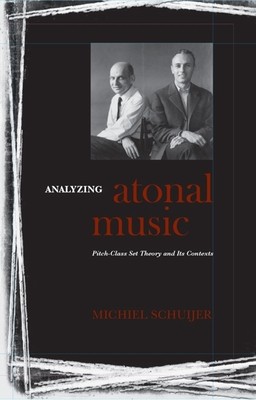
- We will send in 10–14 business days.
- Author: Michiel Schuijer
- Publisher: University of Rochester Press
- Year: 2008
- Pages: 328
- ISBN-10: 1580462707
- ISBN-13: 9781580462709
- Format: 15.8 x 23.4 x 2.5 cm, hardcover
- Language: English
- SAVE -10% with code: EXTRA
Reviews
Description
An engaging study -- the first ever -- of the principles used by noted scholars to unravel the masterpieces of Schoenberg, Stravinsky, and other modernists.
For the past forty years, pitch-class set theory has served as a frame of reference for the study of atonal music, through the efforts of Allen Forte, Milton Babbitt, and others. It has also been the subject of sometimes furious debates between music theorists and historically oriented musicologists, debates that only helped heighten its profile. Today, as oppositions have become less clear-cut, and other analytical approaches to music are gaining prominence, the time has come for a history of pitch-class set theory, its dissemination, and its role in the reception of the music of Schoenberg, Stravinsky, and other modernist composers.Analyzing Atonal Music: Pitch-Class Set Theory and Its Contexts combines thorough discussions of musical concepts with an engaging historical narrative. Pitch-class theory is treated here as part of the musical and cultural landscape of the United States. The theory's remarkable rise to authority is related to the impact of the computer on the study of music in the 1960s, and to the American university in its double role as protector of high culture and provider of mass education. Michiel Schuijer teaches at the Conservatory of Amsterdam and the University of Amsterdam. His research focuses on topics at the interface between music theory and historical musicology.
EXTRA 10 % discount with code: EXTRA
The promotion ends in 20d.17:59:54
The discount code is valid when purchasing from 10 €. Discounts do not stack.
- Author: Michiel Schuijer
- Publisher: University of Rochester Press
- Year: 2008
- Pages: 328
- ISBN-10: 1580462707
- ISBN-13: 9781580462709
- Format: 15.8 x 23.4 x 2.5 cm, hardcover
- Language: English English
An engaging study -- the first ever -- of the principles used by noted scholars to unravel the masterpieces of Schoenberg, Stravinsky, and other modernists.
For the past forty years, pitch-class set theory has served as a frame of reference for the study of atonal music, through the efforts of Allen Forte, Milton Babbitt, and others. It has also been the subject of sometimes furious debates between music theorists and historically oriented musicologists, debates that only helped heighten its profile. Today, as oppositions have become less clear-cut, and other analytical approaches to music are gaining prominence, the time has come for a history of pitch-class set theory, its dissemination, and its role in the reception of the music of Schoenberg, Stravinsky, and other modernist composers.Analyzing Atonal Music: Pitch-Class Set Theory and Its Contexts combines thorough discussions of musical concepts with an engaging historical narrative. Pitch-class theory is treated here as part of the musical and cultural landscape of the United States. The theory's remarkable rise to authority is related to the impact of the computer on the study of music in the 1960s, and to the American university in its double role as protector of high culture and provider of mass education. Michiel Schuijer teaches at the Conservatory of Amsterdam and the University of Amsterdam. His research focuses on topics at the interface between music theory and historical musicology.


Reviews